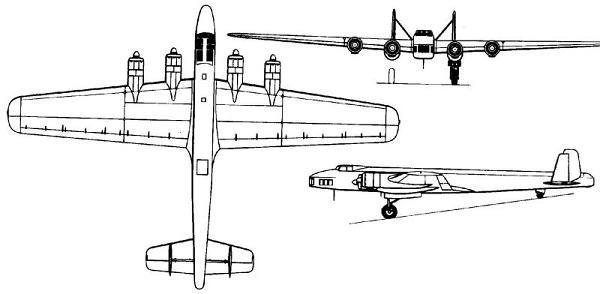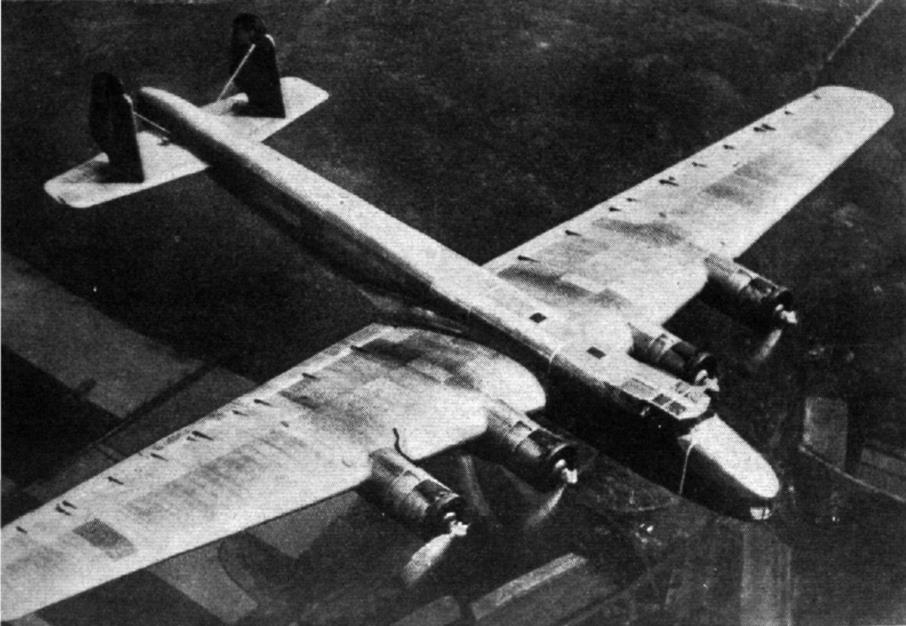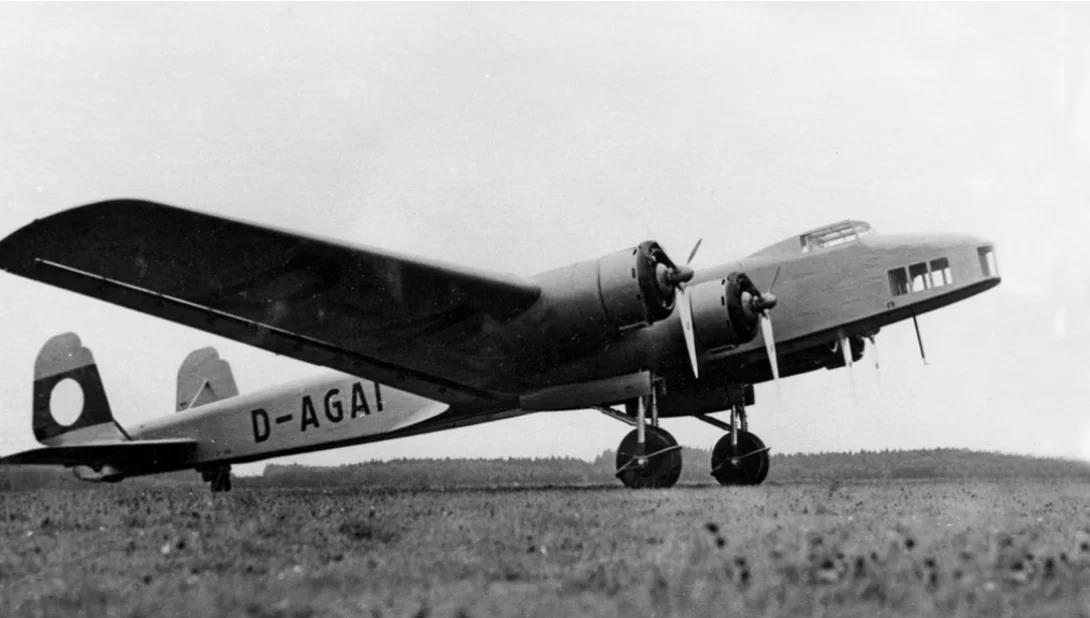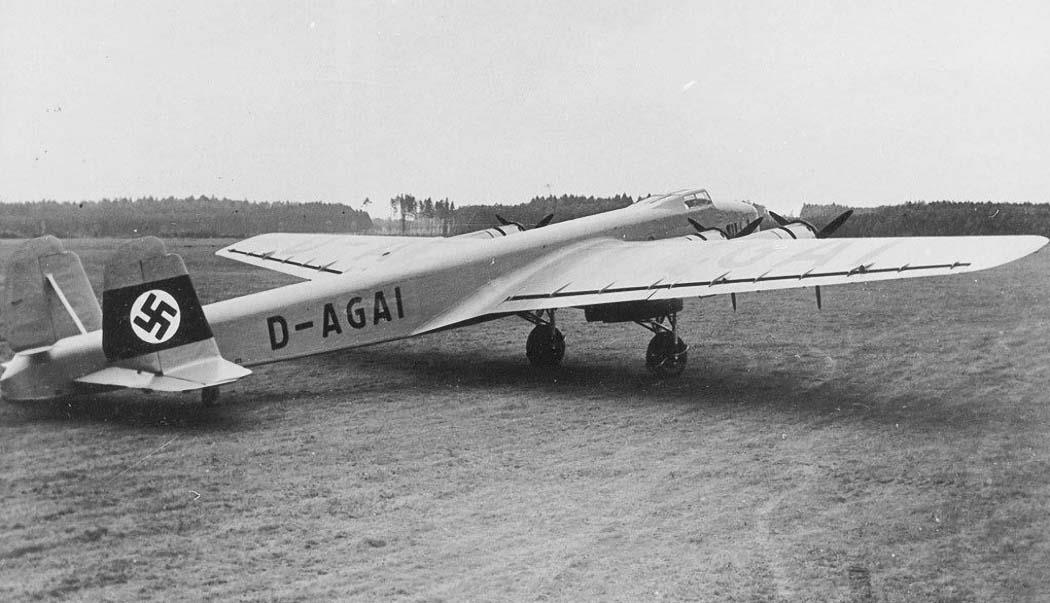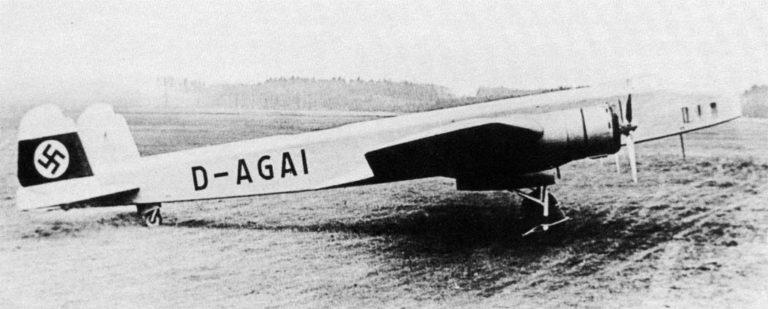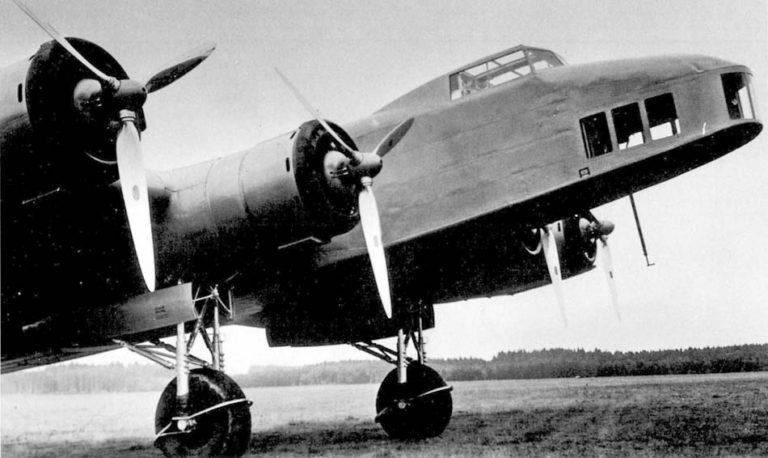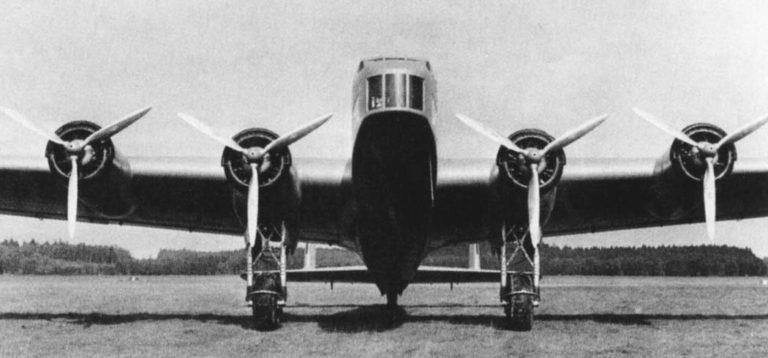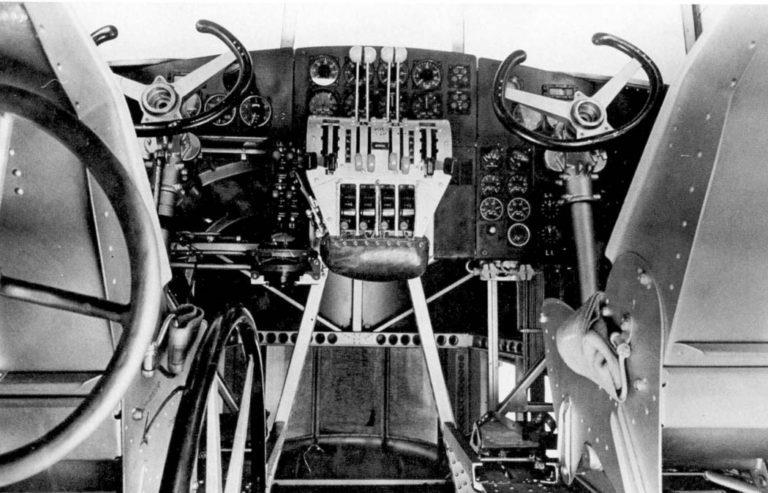| Type |
Heavy bomber, crew : 10, pilot, co-pilot, navigator, bombardier, radio operator and five gunners |
| Engine |
4 Bramo 322H-2 with 3-bladed variable-pitch propellers |
| Dimensions |
Length 25,45 m , height 5,76 m, span 35 m , wing area 160,2 m2 , |
| Weights |
Empty 11865 kg, loaded , max. take off weight 18500 kg |
| Performance |
Max.. speed 315 km/h at sea level at 18000 kg , cruising speed 250 km/h at 2000 m , range 1600 km, endurance , service ceiling 5600 m , climb to 2000 m 30 min. 30 sec. |
| Armament |
1 7.92 mm MG 15 machine gun in nose 1 7.92 mm MG 15 machine gun in tail 1 20 mm cannon in dorsal turret 1 20 mm cannon in ventral turret
16 100 kg bombs |
| Type |
Werk.Nr |
Registration |
History |
| V1 |
|
D-AGAI |
First flight 28 October 1936. |
| V2 |
|
|
Not finished .Scrapped |
| V3 |
|
|
Not finished .Scrapped |
The Dornier Do 19 was a German four-engine heavy bomber that first flew on 28 October 1936. Only one prototype flew, and it was converted to a transport in 1938. The other two were scrapped.
The Luftwaffe lacked an efficient heavy bomber fleet. Generalleutnant Walther Wever, the Luftwaffe's first Chief of Staff, was the most persistent advocate of a German long-range strategic bomber fleet. The Dornier Do 19 was built for the Luftwaffe's Ural bomber program under General Wever, competing against the Junkers Ju 89. The RLM Technisches Amt issued a specification for a four-engine heavy bomber. But after Wever's death in an airplane crash in June 1936, Wever's successor, Albert Kesselring, canceled Germany's long-range bomber projects to concentrate on tactical bombers.
Both Dornier and Junkers were competitors for the contract, and each received an order for three prototypes in late 1935. The Dornier design was given the project number Do 19, while the Junkers prototype became the Ju 89.
The Dornier Do 19 was a mid-wing cantilever design, and was mostly metal in construction. It had a rectangular-section fuselage and the tail had braced twin fins and rudders, mounted on the upper surface of the tailplane, itself set low on the rear fuselage. This was quite similar to the tail of the contemporary British Armstrong Whitworth Whitley medium bomber. It also had retractable landing gear, including the tailwheel. The powerplant, according to some sources, was supposed to be four Bramo 322H-2 radial engines that were mounted in nacelles at the leading edges of the wings.
Its crew of ten would have consisted of a pilot, co-pilot, navigator, bombardier, radio operator, and five gunners.
From late 1935, the poor promised performance of the Do 19 and competing Junkers Ju 89 resulted in the "Ural Bomber" programme being reduced to a technology demonstrator status, with Weaver losing confidence in the designs, with the Bomber A programme for a more advanced heavy bomber with much greater performance launched on 17 April 1936. The Bomber A project led to the development of the Heinkel He 177.
The V1 prototype flew on 28 October 1936. After Generalleutnant Wever died in an airplane crash on 3 June 1936, the heavy bomber program lost its momentum, and never recovered. According to the military historian Richard Suchenwirth , one of the reasons for the failure of the Luftwaffe in the air offensive against Britain, as well as for the lack of air support for the operations of the U-boat forces, was the absence of a good, reliable strategic bomber By then, however, it was too late to develop the bombers required.
Albert Kesselring, Wever's successor, believed that what Germany required were more fighters and tactical bombers such as the Junkers Ju-88
Also Kesselring and Hans Jeschonnek had suggested to Göring that it would be better to drop heavy bomber projects due to material shortages. Around 2.5 tactical bombers could be built with the same material as one heavy bomber. In May 1937, the projects were cancelled. Erhard Milch recalled Göring saying, "The Fuehrer does not ask me what kind of bombers I have. He simply wants to know how many!"
Therefore, the V2 and V3 prototypes were scrapped. The original V1 became a transport in 1938. The Dornier Do 19 had a disappointing performance: it was slow, carried only a 1,600 kilograms bombload, and had only medium range. In fact, the whole Ural bomber concept had already been abandoned, not only because the required range was impossible, but also because of inadequate navigation and bombsights.
